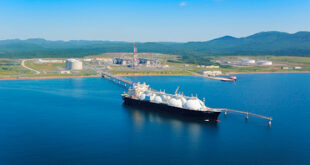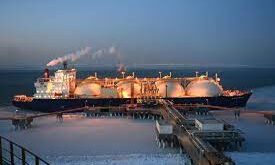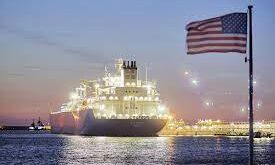South Pars development phases 17-21 will add more than 150 million cubic meters d (5.3 Bcf d) of new gas production from the giant Iranian offshore field when they achieve full operating capacity. oil ministry news agency Shana reported Saturday quoting the CEO of National Iranian Oil Company. Ali Kardor.
We are now witnessing their completion and operation. Kardor said. referring to the five phases inaugurated in April. according to a transcript Shana published of an interview by Iran Petroleum.
In a separate Shana report. Iran Petroleum put South Pars` current gas output at 540 million cu m d. up from 280 million cu m d in 2013. when Hassan Rouhani first became president.
Development of the field started 15 years ago and has accelerated under Rouhani`s administration. Iran Petroleum reported.
To date. eight new South Pars phases have been brought on stream by the Rouhani administration. Rouhani was elected May 19 to his second term in office. Project phases 12. 15 and 16 were completed earlier.
Iran`s petroleum ministry has assigned top priority to the development of South Pars. which has gas reserves estimated at about 500 Tcf. not only because of the Persian Gulf field`s huge size but also because it extends across Iran`s maritime border with Qatar.
Qatar calls its side of the gas deposit North Field and estimates the gas reserves at roughly 900 Tcf.
After the new administration took office. crude oil prices had fallen. we were under sanctions and our oil export rate had declined. Therefore. NIOC`s financial resources had declined sharply and we could not develop all phases together. Kardor said. Had we done so. none of these phases would have reached production.
Financial resources were allocated first to projects that had progressed the furthest so that they could be brought into production faster. he added.
Financing remained a serious obstacle to development. Kardor said. With sanctions still in place. about $3 billion in financial guarantees were extended to contractors by the National Development Fund of Iran to enable South Pars development work to proceed. he added.
Total development costs for phases 17-21 was around $18 billion: nearly $7 billion for the combined phases 17 and 18. $5.5 billion for phase 19 and $5.3 billion for the combined phases 20 and 21. he said.
Each new South Pars phase would raise Iran`s GDP by 1%. Kardor estimated. adding that incremental South Pars gas supplies would displace liquid fuels. allowing the country`s oil exports to rise.
Any delay in bringing these phases into operation means funneling profits to Qatar`s market. he said.
ESSENTIAL EQUIPMENT RELEASED
The lifting of nuclear sanctions in January 2016 after Iran signed a nuclear deal with the P5+1 group of international powers. known as the Joint Comprehensive Plan of Action. speeded up South Pars development by enabling Iran to import essential equipment that had been impounded in European countries and the UAE. Kardor said.
Now facing the prospect of production declines at some South Pars phases without facilities upgrades. Kardor said compressors and pressure-booster platforms were being installed to avert a pressure decline that would hurt output.
These platforms weigh 19.000 to 20.000 mt. Iranian companies can build platforms weighing up to 7.000 mt and the contractors` yards do not have the equipment to build pressure-booster platforms. Therefore. we have to apply special equipment and technology which Iranian companies lack. he said. explaining the need for foreign input. Eventually. as Iranian contractors worked alongside international partners and gained more experience. the construction know-how would be transferred to Iran. he said.
NEEDS FOREIGN INVESTMENT
Long-term reliance on the National Development Fund of Iran for finance would be unfeasible. Kardor said.
Mere reliance on the NDFI resources is not a long-term and defendable approach. These resources will help the development of jointly owned fields until the way is cleared for attracting foreign investment. he added.
NIOC is making efforts to apply a variety of investment attraction methods in order to reduce dependence on domestic financial resources. This company is facing numerous financial bottlenecks. In order to deal with development projects under such circumstances we need to develop skills to attract foreign investment and apply creative methods. he said.
Kardor described NIOC`s recent Eur550 million ($615 million) deal to buy corrosion resistant steel tubing from Spanish manufacturer Tubacex as one that would both assist further development and maintenance efforts at South Pars. where the pipes are extensively used. and facilitate technology transfer to Iran.
NIOC is serious pursuing the transfer of technology for building this tubing in the country. he added.
On the development of Iran`s offshore North Pars gas field. Kardor said it was a project for future development as the field lay entirely within Iran`s territorial waters. However. North Pars gas could be used to make up for any production shortfalls in the event of a fall-off in reservoir pressure. he added.
If not. we can use the North Pars gas for LNG and exports. Kardor said.
Development of jointly owned fields remains a priority for NIOC and that is why all activities in South Pars are concentrated on maximum recovery from this field. he added.
Iran holds the world`s second largest gas reserves after Russia. but currently consumes almost all the gas it produces. offsetting limited exports to Turkey and Azerbaijan with imports from Turkmenistan. It expects to become a major gas exporter. starting with proposed pipeline exports to Iraq. Oman and Pakistan.

 Iran Energy News Oil, Gas, Petrochemical and Energy Field Specialized Channel
Iran Energy News Oil, Gas, Petrochemical and Energy Field Specialized Channel



